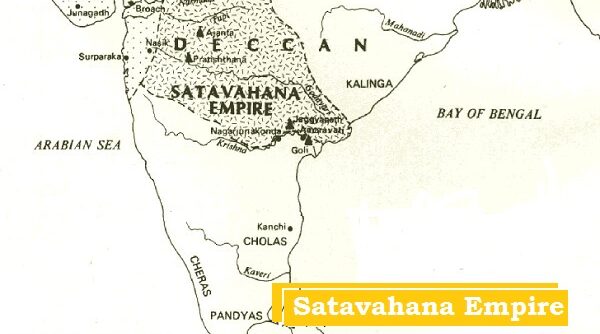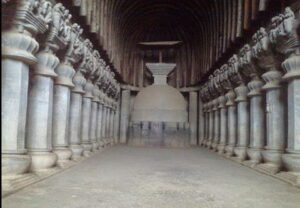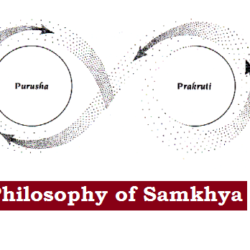
On the ruins of Mauryan Empire, Satavahana Dynasty was built in 1 century BC by Simuka who destroyed the Shunga power and established peace in the Deccan region. They have been mentioned as Satavahanas, Satkarnis and Andhras in Puranas.
The Satavahana kingdom chiefly comprised of modern-day Andhra Pradesh, Telangana and Maharashtra. At times, their rule also included parts of Karnataka, Gujarat and Madhya Pradesh.
They had their capital at Pratishthana. They followed the Mauryan administrative structure.
The dynasty reached its zenith under the rule of Gautamiputra Satakarni and his successor Vasisthiputra Pulamavi. The kingdom fragmented into smaller states by the early 3rd century AD.
Satakarni I:
- Son of Simuka, Satakarni I was the first Satavahana king to expand his empire by military conquests.
- He conquered Kalinga after the death of Kharavela and also pushed back the Sungas in Pataliputra.
- After annexing the Godaveri Valley, he assumed the title of ‘Lord of Dakshinapatha’.
- His queen was Nayanika who wrote the Naneghat inscription which describes the king as Dakshinapathapati.
- He performed Ashvamedha and revived Vedic Brahminism in the Deccan.
Satakarni II:
- Longest ruling king of Satavahana Dynasty, mentioned in Hathigumpha Inscription of Kharvela.
Hala:
- He was a vassal Satavahana king during Kshatrapa interregnum.
- King Hala compiled the Gatha Saptashati Called ‘Gaha Sattasai’ in Prakrit, it is a collection of poems with mostly love as the theme.
- The Maharashtri Prakrit novel Lilavati describes his romance with a princess of Simhaladvipa(Sri Lanka).
- Hala’s minister Gunadhya composed Brihatkatha.
Gautamiputra Satakarni (80-110 AD):
- Defeated Nahapana, a vassal Satavahana king during Kshatrapa interregnum and defeated the Greeks, Pahlavas (Indo-Parthians) and the Sakas to revive the lost power of the Satavahanas.
- He was called Ekabrahmana and considered the greatest king of the Satavahana dynasty.
- His kingdom ran from Krishna in the south to Malwa and Saurashtra in the north and from Berar in the east to the Konkan in the west.
- His mother was Gautami Balashri mentioned his achievements in Nasik Inscriptions.
- He called himself the only brahmana and destroyed many kshatriya rulers.
- He was succeeded by his son Vasisthiputra Sri Pulamavi or Pulamavi II.
Pulamavi II:
- He extended the Satavahana Empire up to Bellary District in modern Karnataka.
- His love for navigation and overseas trade is shown by the representation of a ship on his coins.
- Nanaghat was the site of an important pass that linked the Satavahana capital Pratishthana to the sea.
- The Girnar Inscription of Rudradaman mentioned that Rudradaman I (the Saka ruler of Kathiawad) defeated Dakshinathpati. However, had close relationship with the Satavahanas.
Social Organization
- Gautamiputra Satakarni called himself the only brahmana and established the four fold varna system which had fallen into disorder.
- Satavahanas mad land grants to brahmanas as well as the Buddhist monks.
- They show the matrilineal social structure, it was customary for their king to be named after his mother. However, the ruling system was patriarchal because succession to the throne passed to the male member only.
- The official language was Prakrit and all inscriptions were composed in this language with Brahmi script.
Economy
- Increasing craft and commerce Satavahana period brought many merchants and artists to the forefront. They made generous donations to the Buddhist cause. Among the artists, the Gandhikas– the perfumers are repeatedly mentioned as donors.
- Satavahanas started the practice of granting tax free villages to brahamanas and Buddhist monks. Nagarjunakonda and Amaravati were the important Buddhist centers.
Art and Architecture

- Many temples and monasteries were built from solid rocks. Chaitya (temple) and vihara (monastery) were the two common structures. The most common chaitya is that of Karle.
- Stupas were built around Ellora. Nagarjunakonda and Amaravati stupas are most famous. Stupa is full of sculptures depicting various scenes from the life of Buddha.
Decline of the Satavahanas
The dynasty was soon extinguished following the rise of its feudatories, perhaps on account of a decline in central power. Pulamavi IV who ruled until 225 AD, is considered the last king of the main Satavahana line.
Several dynasties divided the lands of the kingdom among themselves. Among them were:
- Western Satraps in the northwestern part of the kingdom.
- Andhra Ikshvakus (or Sriparvatiyas) in the Krishna-Guntur region.
- Abhiras in the western part of the kingdom. They were ultimately to succeed the Satavahanas in their capital Pratishthanapura.
- Chutus of Banavasi in North Karnataka.
- Kadambas of Banavasi in North Karnataka.
- Pallavas of Kanchipuram, of whom the first ruler was Simhavarman I.

 Home
Home Syllabus
Syllabus Contact Us
Contact Us




